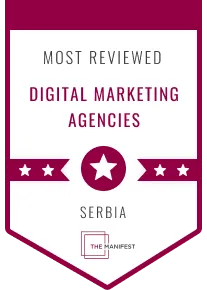Introduction: The Evolving Landscape of Content Marketing in 2025
I’m sure you’ve heard it a million times. Content is king. But in 2025, the competition for eyeballs is fiercer than ever. It’s not enough to simply throw some blog posts and social media updates out into the world, keep your fingers crossed and hope for the best. You need a winning content marketing strategy that will grab people’s attention, engage them, and keep them coming back for more.
I suppose the question is how do you create this winning strategy?
The Power of Experimentation in Content Strategy
Let’s face it, nobody really knows what’s going to work until they try it. That’s why experimentation is so important when it comes to content marketing, you need to be willing to take the risks, test new ideas, and see what resonates with your audience.
Discovering What Resonates with Your Audience: A Case Study
Maybe you’ll discover your followers go crazy for long-form video content, or that your blog posts get more engagement when you ask questions at the end. The point is, you won’t know until you try, let’s say for example, you’re a fashion brand that’s trying to increase engagement on Instagram. You might start by experimenting with different types of content, such as videos of your models wearing your clothes, flat lays of your products, and behind-the-scenes shots of your design process.
By tracking the engagement rates of each post, you can start to see a pattern and figure out what type of content your audience is most interested in. Maybe you discover that your followers love behind-the-scenes content but aren’t as engaged with Product shots. Armed with that knowledge, you can start to create more behind-the-scenes content that will resonate with your audience. You know, this can include the video side, everything.
Embracing New Formats and Platforms for Maximum Impact
But experimentation isn’t just about testing different types of content. It’s also about trying out new formats and platforms. Maybe you’ve never done a live video before, or you’ve never used TikTok to specifically to promote your brand. By experimenting with these new formats, you can learn what works and what doesn’t in a pretty low risk environment.
Learning from Failure: A Key to Successful Content Marketing
Now, of course. Experimentation requires a certain level of risk-taking. Not every experiment is going to be success. Um, but by embracing failure as a learning opportunity, you can take the lessons you’ve learned and apply them to your next experiment. Let’s say you tried a new format that didn’t resonate with your audience.
Instead of giving up, you might ask yourself, why didn’t it work? Was it the content itself, or was it the way you presented it? Did you promote it effectively? Did you target the right audience? By analysing what went wrong, you can make adjustments and try again. We can see, you know, experimentation is key to creating a successful content marketing strategy because it allows you to learn what works and what doesn’t.
Using Data and Insights to Refine Your Content Marketing Strategy
By testing different types of content formats and platforms, you can gather the data and insights that will help you refine and improve your strategy over time. Don’t be afraid to take the risks and try new things. And remember that failures can be incredibly valuable learning opportunities. Trends have always been incredibly important to businesses and for the businesses to follow.
Staying Ahead of Trends: A Must in 2025
However, trends do come and go, but if you want to stay relevant in 2025, you need to pay attention to what’s happening in your industry and in the world at large. That means staying on top of the latest news, following influencers on social media and researching what your audience is searching for online.
Once you’ve identified a trend that’s relevant to your brand, find a way to incorporate it into the content in a way that feels authentic and true to your brand, whether it’s a social media post, a blog article, or a video, make sure your content is adding something valuable to the conversation.
Effective Research Tools for Understanding Audience Interests
There are several ways that you can research what your audience is searching for online and to do keyword research and use tools such as Google Keyword Planner and Moz Keyword Explorer or Ahrefs Keyword Explorer to see what keywords and search queries.
Related to your industry are popular. This will give you an idea of what topics your audience is interested in and searching for. There are very many media listening tools out there that monitor social media platforms like Twitter, Instagram, Facebook for hashtags and topics related to your industry enables you to see what people are talking about, what questions they’re asking and what content is getting the most engagement.
For this specific podcast I spend a lot of time researching about what questions people are asking. Um, this is how I come up with the schedule of what I’m going to post, um, in the podcast. I think one of the most underrated tools is actually Google trends. Very few people I know that utilise it. Now this enables you to see topics and trending in your industry and how interests in that topic are changing over time. You can also use Google trends to see what related queries people are searching for. And of course, you must join online communities, that are related to your industry, such as forums on Facebook groups and see what they’re talking about, what questions are being asked, what topics are generating the most discussions. Use this information to guide your content creation.
The Importance of Competitor Analysis in Content Creation
Now, if you’re a regular listener to my podcast, um, I talk a lot about competitor analysis. Now, this is so important for any business. So, you must look at your competitors, um, and what they’re doing and see what’s working for them.
What type of content are they creating? What topics are they covering? And use this information to inspire your own content. To identify gaps in the market that you can fill by using these research tools. You can get a better understanding of what your audience is searching for online and what specific topics and trends you should be incorporating into your content. But remember to always create content that adds value and is true to your brand.
Collaboration with Influencers: Expanding Your Reach
Even when you’re following a trend, there is great value in collaboration, especially with other influencers. As the saying goes, two heads are better than one. And when it comes to content marketing, collaborating with other influencers can help you reach a wider audience and bring fresh perspective to your content.
Find other influencers in your industry who share your values and target audience and look for ways to partner with them. Maybe you can cocreate a piece of content, cross-promote each other on social media, or collaborate on a video or podcast, the possibilities are absolutely endless.
Optimising for Different Platforms: A Tailored Approach
Certain platforms do favour certain types of content. So, it’s important to remember that different platforms have different algorithms. And what works on one might not work on the other. That’s why it’s important to create platform-specific content. That takes into account the nuances of each platform. For example, Instagram is all about eye-catching visuals and snappy captions and Insta videos and all of that.
While LinkedIn is more focused on the professional thought leadership content. Take the time to research the platform and figure out what type of content performs best and then create content that fits that specific mold.
The Role of A/B Testing in Content Optimisation
There is a massive importance of comparing content that you create. Now, have you ever sent out a marketing email or posted a social media update only to hear crickets in response?
It’s, it’s a really sinking feeling, isn’t it? Um, I’ve done it many a time. You put all the time and effort into creating what you thought was a great piece of content only to find out that your audience just isn’t into that.
That’s where A2B testing comes in.
Now, A2B testing is the practice of comparing two different versions of a piece of content, such as a subject line, a call to action, headline, or social media posts to see which one performs better.
By testing these variations on a small sample of your audience, you can gain insight into what works and what doesn’t. And optimize your content accordingly. So how do you get started with A2B testing? Well, first identify, identify a piece of content that you want to test, such as a subject line or call to action, then creates two different versions of that content with one small difference between the two.
For example, a different word or phrase, test each version on a small sample of your audience, and then use that version that performs the best. There are a number of A to B testing tools out there, such as Google Optimise. They can help you set up and run the tests. It’s incredibly powerful to optimize your content and increase your chances of success.
By identifying the best, performing content reduces risk and gains insight into audience preferences. You can create content that truly resonates with your audience. So don’t be afraid to experiment and try different variations of content. Who knows, you might just strike gold and go viral like mad.
Conclusion: Encouraging Feedback and Continued Learning
Anyway, thanks for tuning in to our podcast all about content marketing. We hope you learned something new and valuable today. If you enjoyed this episode, be sure to subscribe to our podcast. So, you never miss an episode. We’re always sharing the latest and what I’d like to say, greatest insights and strategies for marketing and e-commerce.
So, you don’t really want to miss out. And if you really liked this episode, leave us a review on your favourite podcast platform. Pretty much on all of them. Your feedback actually helps us reach more listeners and continue to create high-quality content that we know you’ll all love.
Thanks again for listening and we’ll see you on the next episode.











